While there’s no doubt that literature is an art form, book covers and jackets are a category all their own. For generations, humans have bound stories, religious accounts, and important legal documents between a variety of materials meant to preserve and represent the content inside. Although people don’t typically bind stories in gold any longer, the gilded covers of yesteryear are still evident in the beautiful illustrations on modern book jackets. Read the list below to learn about the amazing, horrifying and classic book covers made across the centuries.
13. The Electric Kool-Aid Acid Test
Year: 1968
[ Artist and/or Publisher: Milton Glaser
Author: Tom Wolfe
Materials: Paper book jacket and cloth binding
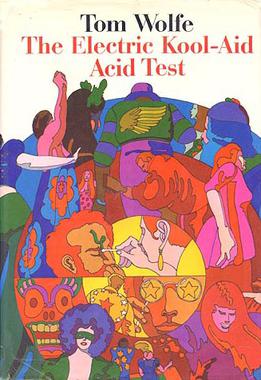
Like “Great Gatsby” and, to an extent, “Little Women,” the cover art for “The Electric Kool-Aid Acid Test” is indicative of the narrative it holds. The psychedelic stylings and bold colors featured on the cover capture Tom Wolfe’s real life story about a group of hippies traveling on a beat up bus. Famed graphic artist Milton Glaser, who is also responsible for the universally recognizable “I love New York” design, created the cover art.
12. The Great Gatsby
Year: 1925
[ Artist and/or Publisher: Francis Cugat
Author: Francis Cugat
Materials: Paper cover and cloth binding
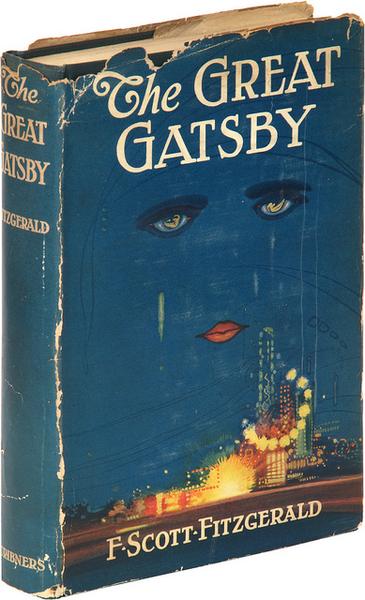
“The Great Gatsby’s” iconic cover art is known as “Celestial Eyes” by Francis Cugat and, unlike some of the other works on this list, has remained recognizable since the novel’s publication. Cugat created the piece before F. Scott Fitzgerald finished the story, but the author insisted that it be kept for “The Great Gatsby” and even stated that he wrote it into the book. The art itself is somewhat of a mystery for literary scholars. It depicts a disembodied face on a blue background overlooking a cityscape.
Close analysis of the eyes reveals an optical illusion— the pupils are two female nudes. Some scholars posit that they could represent the main relationship in the story. Overall, the book jacket shows a move toward designing specialized book covers for the material, rather than the nineteenth century trend of plain typeface.
11. Little Women
Year: 1868
[ Artist and/or Publisher: Roberts Brothers
Author: Louisa May Alcott
Materials: Cloth
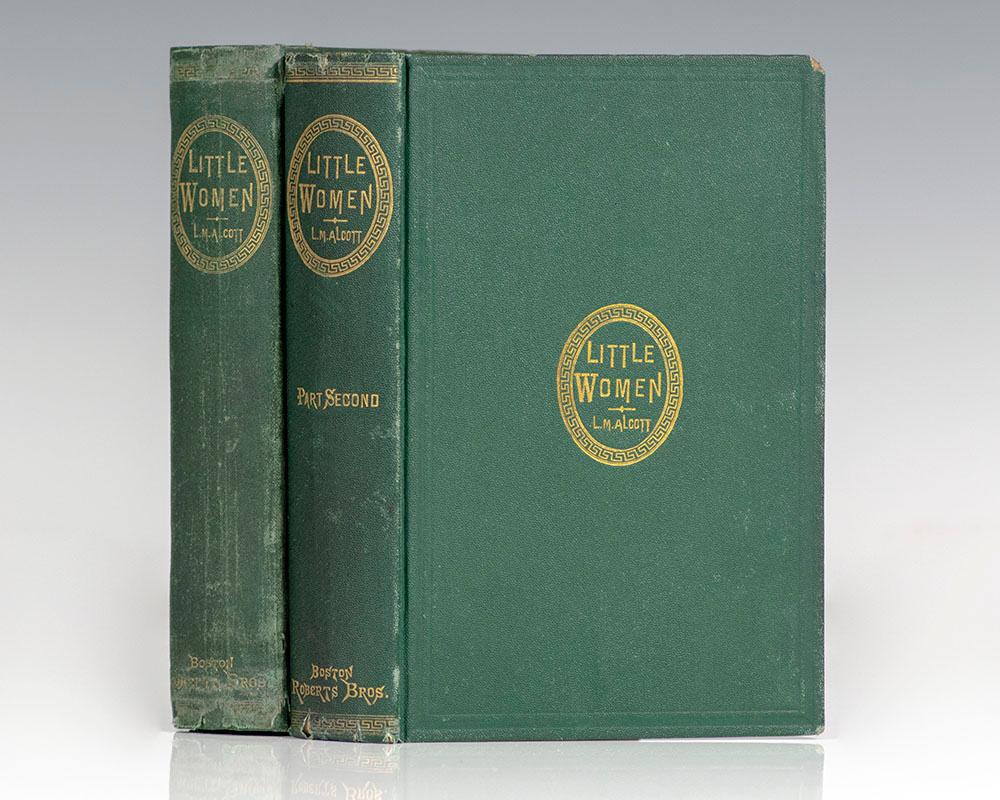
“Little Women” has a somewhat similar design to Frederick Douglass’ autobiography, showing a trend in mid to late nineteenth century book design. Alcott’s original work was bound in green cloth with minimal gold decorations and a title on the front cover and spine. The title is surrounded in a Grecian-style border, which is also present on the top and bottom of the spine. The font is the most notable aspect of the cover as it is stylized for the book.
10. Narrative of the Life of Frederick Douglass
Year: 1845
[ Artist and/or Publisher: Anti-Slavery Office
Author: Frederick Douglass
Materials: Frederick Douglass
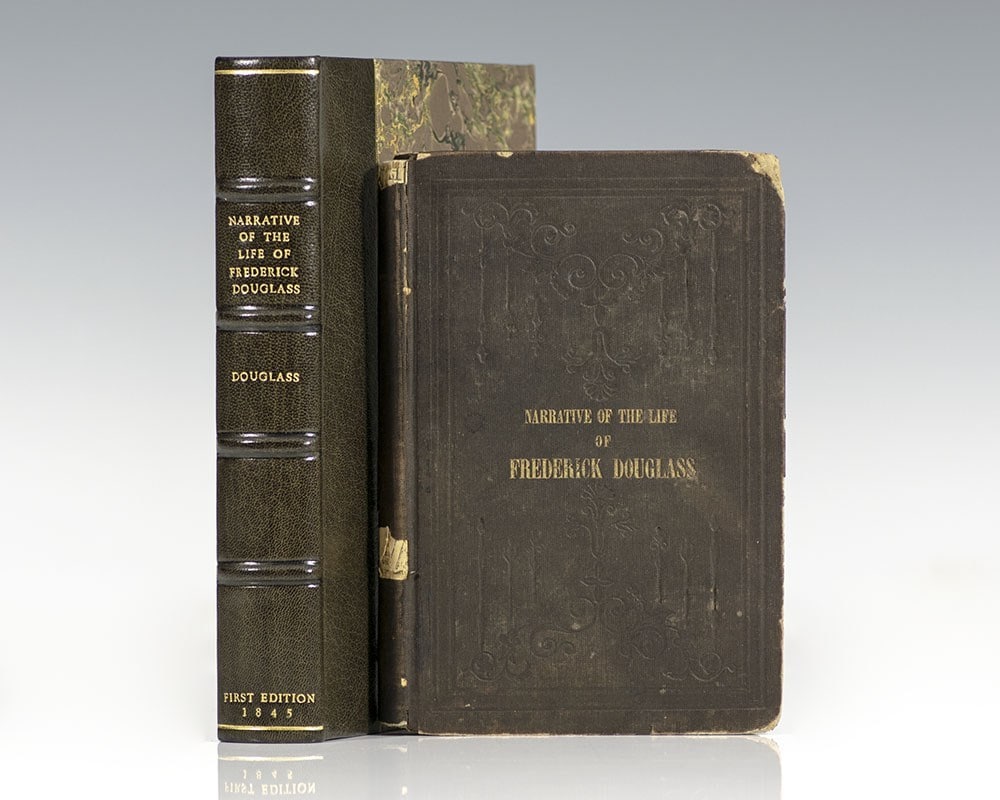
One of the most important and popular abolitionist documents, “The Narrative of the Life of Frederick Douglass,” was fairly humble in its original edition. The covers are brown cloth with decorative etchings. The title and author are present in gold on the front cover and the spine shows evidence of gold detailing as well.
9. The John Horwood Book
Year: 1821
[ Artist and/or Publisher: Richard Smith
Author: Several as it is a compilation of sources
Materials: Leather made of human skin
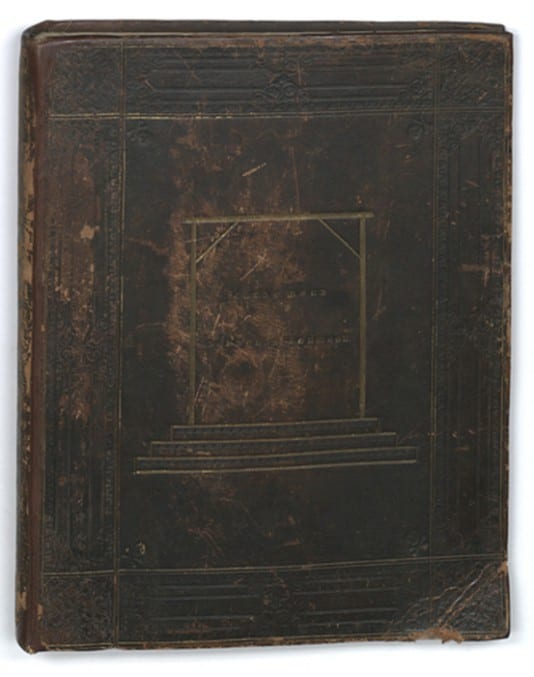
Binding books in human skin might seem like a macabre Medieval practice, but “The John Horwood Book” is only 200 years old. Named for the man whose skin it bears, “The John Horwood Book” is a compilation of newspaper clippings and relevant legal materials that tell the story of Horwood’s murder of Eliza Balsum and his subsequent execution. Surgeon Richard Smith dissected Horwood’s corpse and then used parts of his skin to create a book cover that held the information about his case. The cover looks like any average leather book and features an artistic rendering of the gallows as well as the words, “Cutis Vera Johannis Horwood” or “The real skin of John Horwood.”
8. Frankenstein
Year: 1817
[ Artist and/or Publisher: Easton Press
Author: Easton Press
Materials: Leather and gold
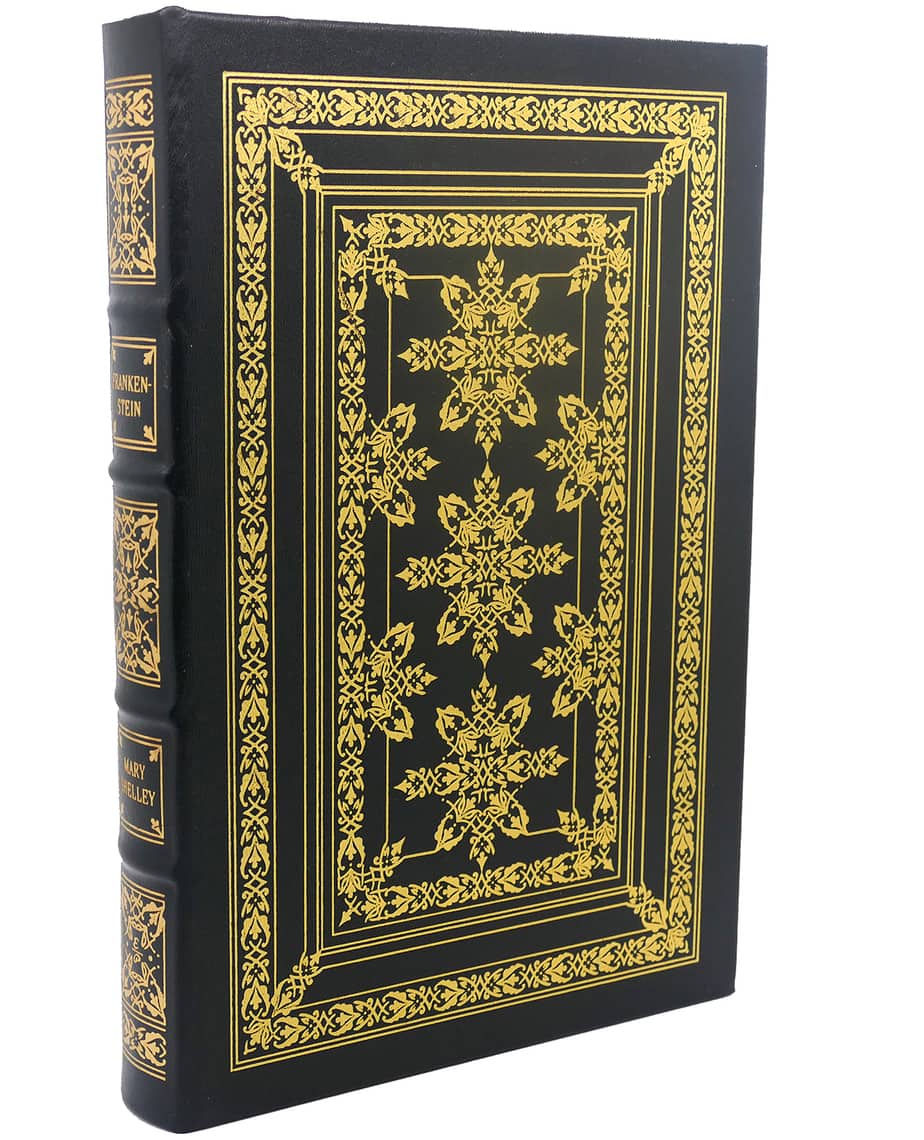
Mary Shelley’s “Frankenstein,” looks like a toned down version of the books of yore. It’s made of green dyed leather and accented in 22 karat gold decorations. The front cover doesn’t mention the title, but does feature an intricate gold floral design and border. The spine has gold designs as well as the title and author name. Although the beautiful book might resemble a religious text, it actually holds one of the first classic horror novels.
7. Golden Quran
Year: c. 1817
[ Artist and/or Publisher: Unknown
Author: Credited to the Prophet Muhammad
Materials: Papier-mache
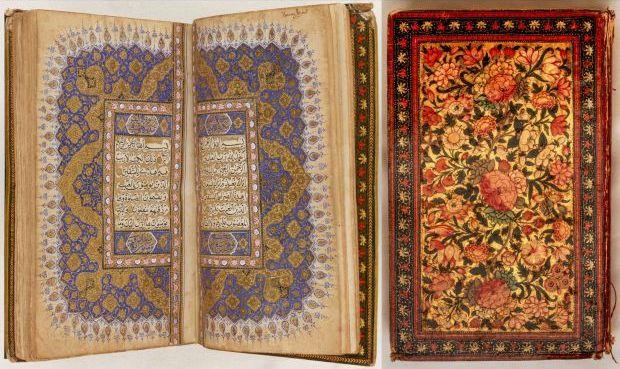
While one might think that the Golden Quran would be similar to the actual gold books on this list, the covers are papier mache floral print full of pink and red peonies with green leaves. The inside of the book is covered in golden ink, hence the name. The origins of this Quran are unknown, but historians believe it is a one of a kind edition most likely commissioned in India.
6. Pride and Prejudice
Year: 1813
[ Artist and/or Publisher: Riviere and Son
Author: Jane Austen
Materials: Calf hide

Jumping ahead to the early nineteenth century, book covers became more casual than their ornate ancestors. The first edition of Jane Austen’s beloved classic “Pride and Prejudice,” was bound in calf hide dyed in gold and reds. The front cover lacks a title, but the spine features the book and author names in gold lettering. In fact, most of the detailing is on the spine; the covers only feature two thin gold borders. This stark turn from gold book covers to simpler design has a few explanations, but it’s most likely due to the mass production of books. Publishers no longer possessed the time or money to hire goldsmiths.
5. Vienna Coronation Gospels
Year: c.1500
[ Artist and/or Publisher: Hans von Reutlingen
Author: Credited to St. John and others
Materials: Gold and jewels
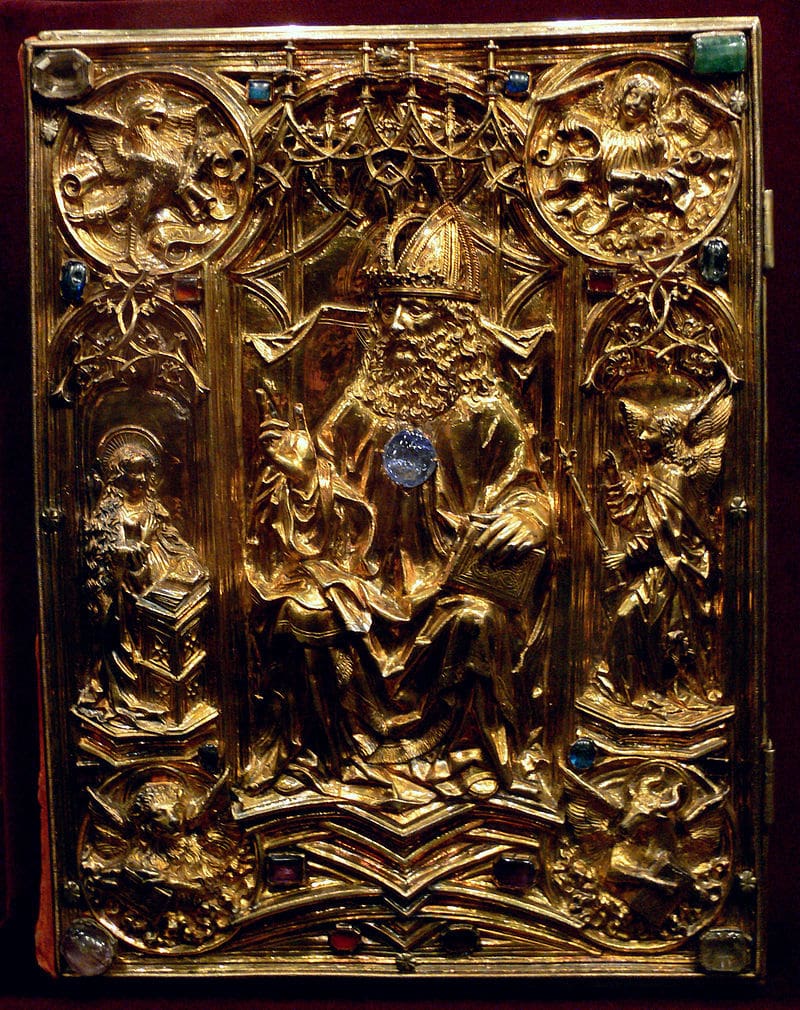
The “Vienna Coronation Gospels” is one of several manuscripts used in the coronation of Holy Roman Emperor Charlamagne and subsequent emperors. It was uncovered in the year 1000 and copies were made for future coronation ceremonies. Hans von Reutlingen designed an ornate cover for the manuscript in 1500. It is made of gold with jewel patterning and depicts God seated at his throne whilst blessing the Virgin Mary. God appears as a king, emulating the Gospel’s role in the coronation.
4. The Book of Llandaff
Year: c. 1120 – 1140
[ Artist and/or Publisher: Unknown, but completed under the supervision of Bishop Urban of Llandaff
Author: Unknown, but completed under the supervision of Bishop Urban of Llandaff
Materials: Oak and gold
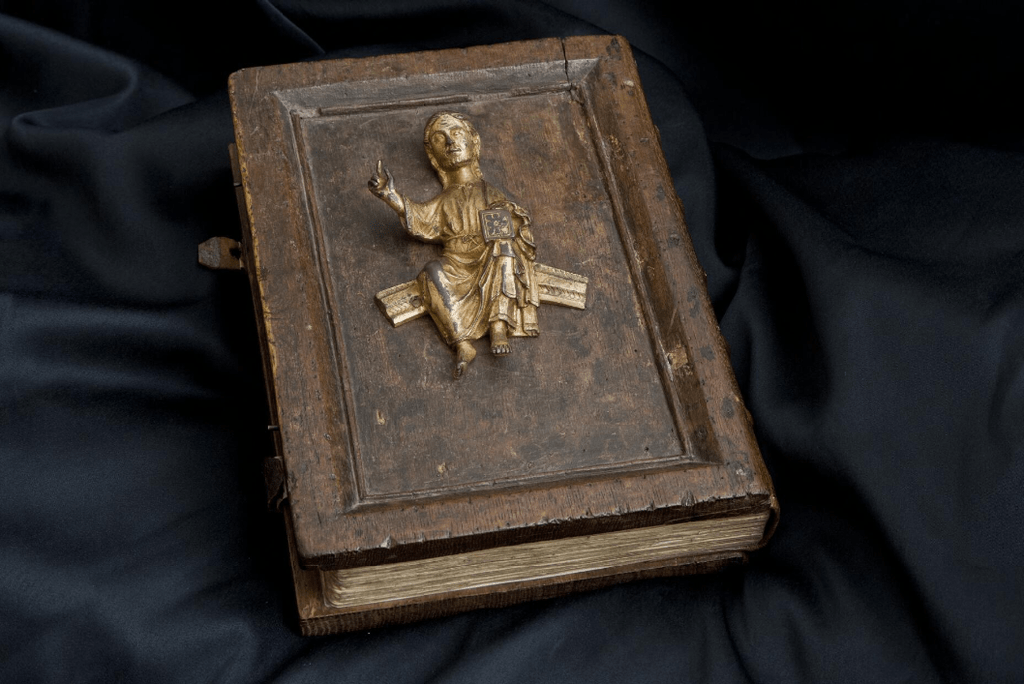
“The Book of Llandaff” tells of religious relations in Wales during the twelfth century and was probably meant to mediate an argument between Church officials about territorial rights. Not much of the book cover remains, but historians used the existing lower cover to determine that it was originally bound in oak wood and then decorated with silver. To dress up the plain design, the cover also features a three dimensional figure of Jesus in gold. The book has been rebound and separated a number of times in efforts to better preserve and study it.
3. Lindau Gospels
Year: c. 700 and c. 880
[ Artist and/or Publisher: Unknown
Author: Credited to multiple
Materials: Gold and jewels
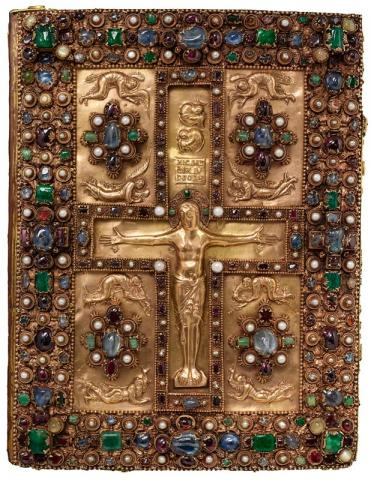
The front and back covers of the “Lindau Gospels” (named for the region in which they were discovered) are some of the most impressive artistic feats to survive the Middle Ages, in part, because they were constructed at entirely different points in time. The back cover was made in the 700s while the front cover wasn’t made until the late 800s. The actual pages weren’t recorded until 10 years after the front cover’s completion. The front cover is made of gold and embellished with precious jewels, some of which are raised for a three dimensional effect. The front cover art features Jesus on the cross surrounded by angels in impressive detail. The back cover is also gold and has an ornate cross surrounded in jewels and extensive gold detailing.
2. St. Cuthbert Gospel
Year: c. 710-720
[ Artist and/or Publisher: Unknown
Author: Credited to St. John
Materials: Birchwood, clay, and goat leather
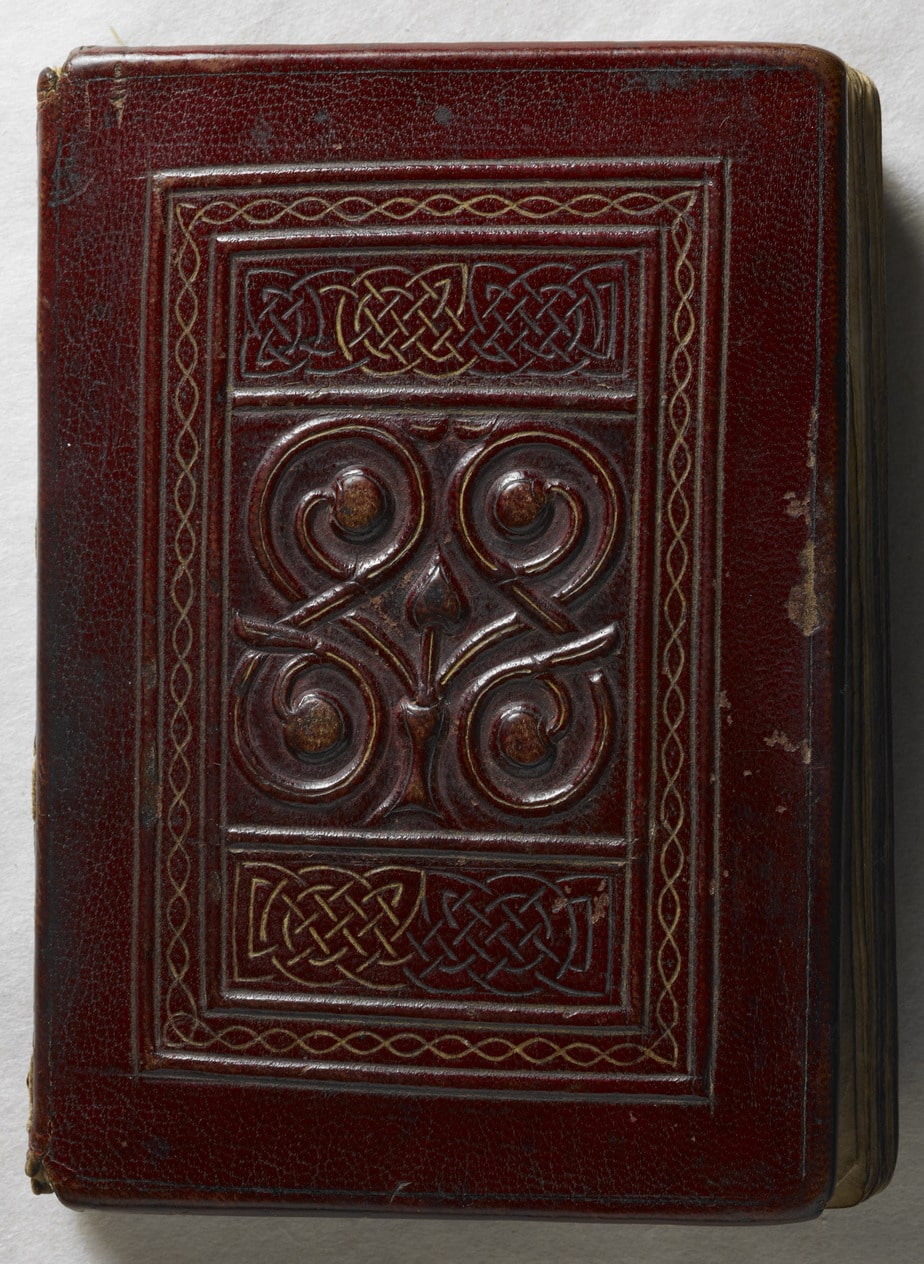
“The St. Cuthbert Gospel” is the oldest bound book of European origin. So old, in fact, that it had been around for about 300 years when it was first discovered in 1104 in St. Cuthbert’s grave. The book contains the Gospel of St. John. It’s bound in small wood boards made of birch and covered in red goatskin leather. The covers don’t have a title on them, but feature Christian symbols that represent St. John. For example, the vine design that borders the cover probably refers to a quote in the Gospel of St. John: “I am the vine. You are the branches” (John 15:5). Research suggests that the artist pressed the vine motif into the leather while it was wet, creating a stamped indentation.
1. Etruscan Gold Book
Year: c. 600 CE
[ Artist and/or Publisher: Unknown
Author: Unknown
Materials: Gold
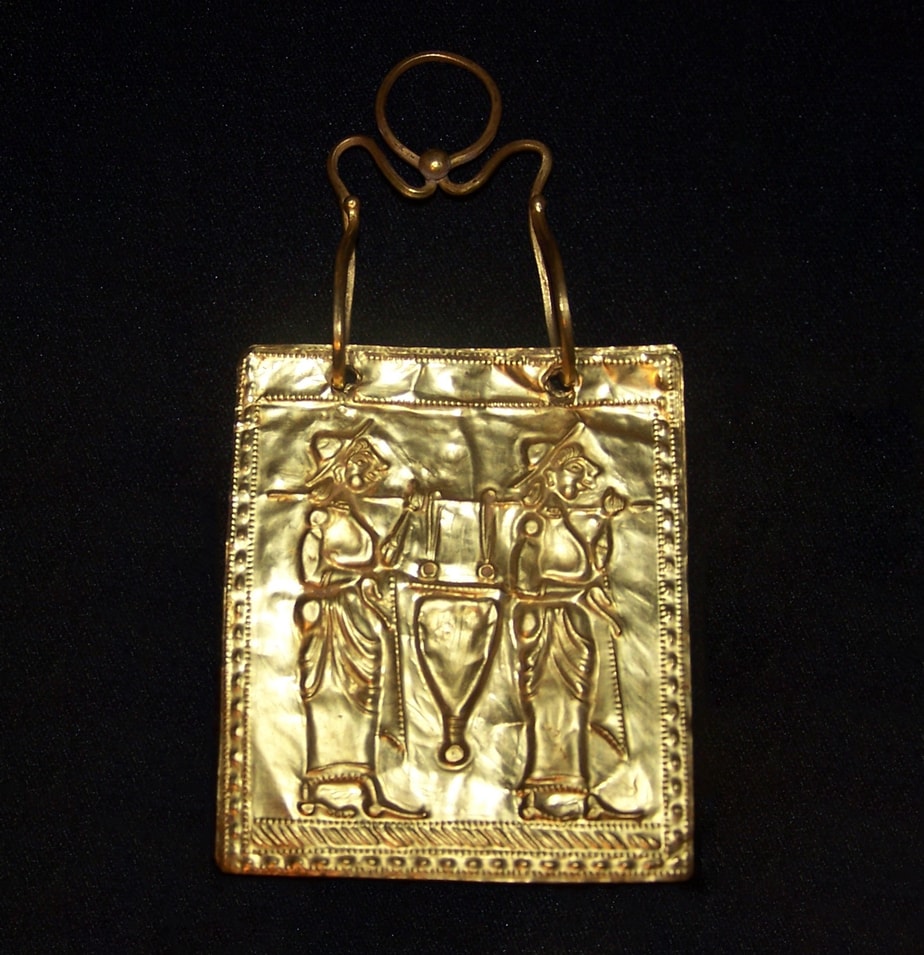
Etruscan authors and publishers liked luxury. Or, at least, the “Etruscan Gold Book” suggests as much. Made entirely of gold plates, the book is the oldest in the world with both its pages and cover still intact. While historians have not fully deciphered the Etruscan alphabet and, therefore, don’t know the book’s true meaning, the illustrations suggest animals and farmers play a role. The book’s cover, also made of gold, features two figures carrying a vessel on a stick surrounded by a decorative border. The art is stamped into the cover, an easier feat considering gold’s malleability and ductility.











